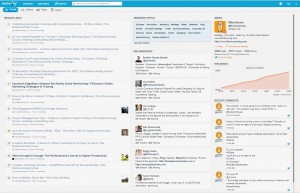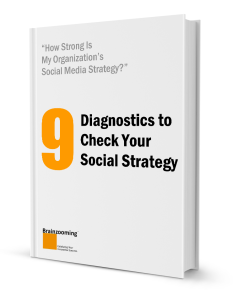Last week, we successfully introduced a strategic integrated marketing communications plan for a B2B client that had traditionally viewed marketing as the "brochure and trade show" department. Beyond delivering a plan stretching and updating its marketing strategy to drive better business results, The Brainzooming Group helped position the day-to-day marketing communications leader as a more strategic partner within marketing and the broader organization.
The strategic plan was the result of solid analytical work and an innovative look at how our client can more simply and effectively deliver its message to target audiences. Success with the plan's ultimate delivery to both our client's president and a 25-person audience also came from in-depth strategizing and implementation.
If you have a big presentation to deliver, here are 8 tactics in our presentation strategy you can use to be more successful as well:
- Write down 3 to 5 objectives you want to achieve with each audience. We had strategic objectives identified for the large audience, the project sponsors, our day-to-day client, and the president. These lists helped ensure the right strategic information was communicated in each presentation.
- Share what you're going to cover with key audience members beforehand. You don't want to surprise someone with a new strategy, causing them to react negatively and derail the overall strategy you're trying to deliver.
- Allow time for multiple iterations of the presentation. The actual Powerpoint itself was nothing dramatic creatively; there was maybe one build slide, and more text on the slides than any of us wanted. Still there were probably 15 different versions of the presentation in the past week as we made ongoing refinements to focus the message, leaving details for the written plan.
- Be a ruthless editor. Two words: Fewer slides.
- Have somebody with fresh eyes look at the presentation. When you've been through multiple versions, it's really easy to start missing what should be apparent gaps. Have a team member more removed from the document's preparation go through it in detail to spot issues.
- Orchestrate how the meeting should end. Our client talked with the president and asked him to do the wrap-up for the presentation. We gave him notes which he modified to fit his strategic view, and he delivered a great message reinforcing the strategic role marketing communications should hold.
- Test the set up the day before. Run through the AV setup the day before, when there are no time pressures. While you're at it, identify the AV person who can be available well before your presentation to make sure everything works when it has to work the next day.
- Work hard to end the presentation early. Even if you wind up booking a little more time than you expect you'll need, make a deliberate attempt to end early, a strategy which always sends people off on a little more positive note.
Did you notice something? Seven, although arguably all eight, of these activities happen before the presentation. I didn't create the list that way deliberately, but it underscores the strategic importance of preparing for a successful presentation. – Mike Brown
The Brainzooming Group helps make smart organizations more successful by rapidly expanding their strategic options and creating innovative plans they can efficiently implement. To learn how we can bring out the best innovative thinking in your team email us at brainzooming@gmail.com or call us at 816-509-5320.



